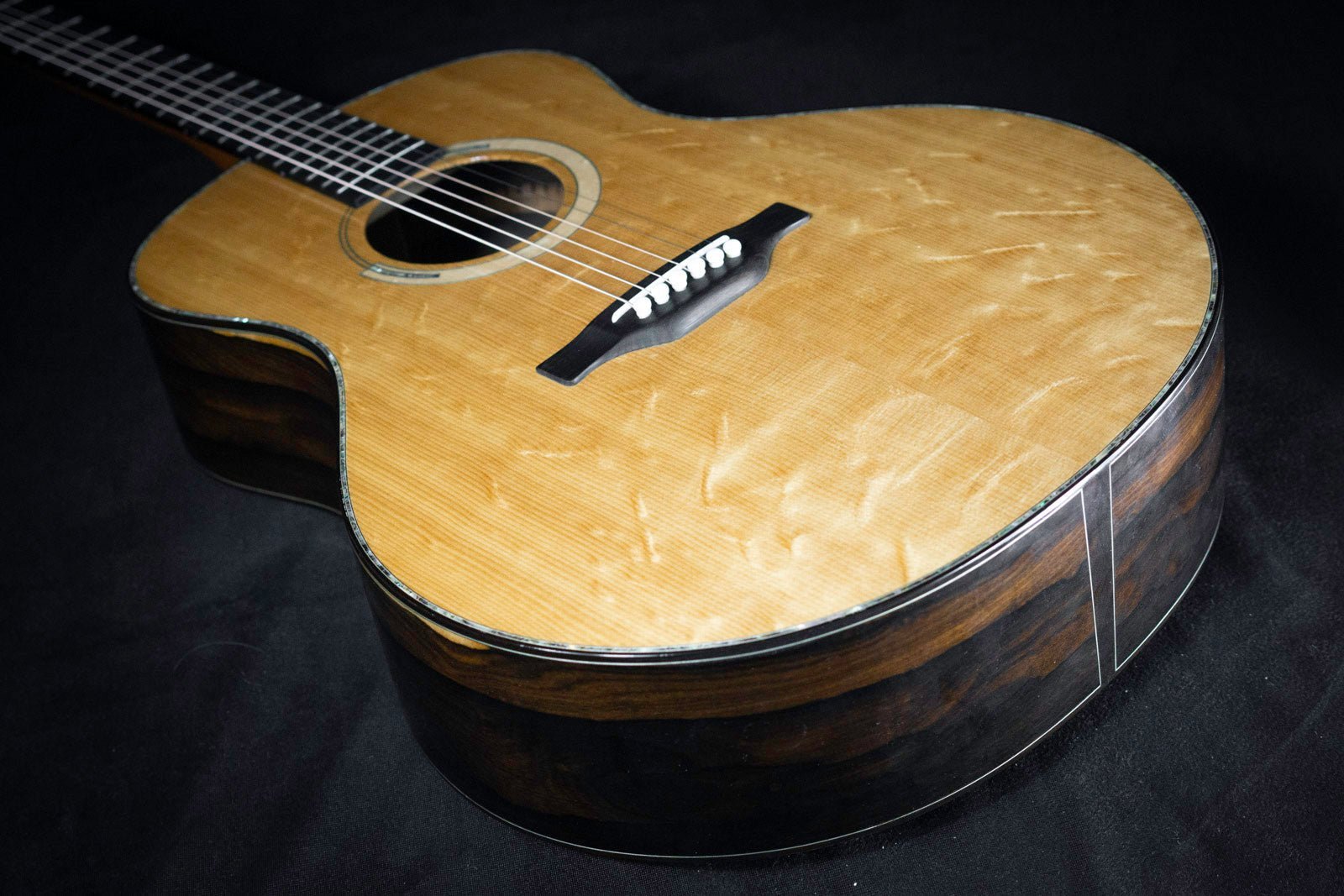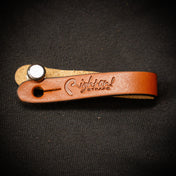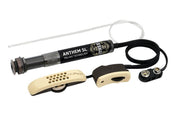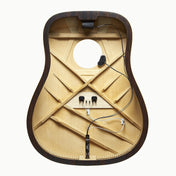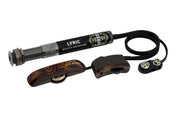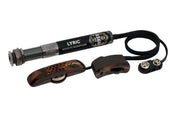Misconception 1: Soundboard Wood Is the Sole Determinant of a Guitar's Tone
One of the most common misconceptions is that the soundboard wood is the primary factor in determining the tone of an acoustic guitar. While the soundboard undoubtedly plays a significant role, it's only part of the equation. The back and side sets also contribute significantly to the instrument's tonal characteristics.
Why It's Misconceived:
The misconception likely stems from the visibility and accessibility of the soundboard, which is the largest and most visible part of the guitar's body. Additionally, marketing efforts by manufacturers may emphasize the importance of the soundboard wood, leading to the belief that it's the sole determinant of tone.
Examples:
1. Spruce Soundboard with Rosewood Back and Sides: This combination often yields a guitar with a bright, articulate sound with excellent projection and clarity.
2. Cedar Soundboard with Mahogany Back and Sides: This pairing tends to produce a warmer, more balanced tone with pronounced midrange frequencies.
Misconception 2: Exotic Tonewoods Always Result in Superior Tone
There's a prevailing belief that guitars made from rare or exotic tonewoods inherently produce superior tone compared to those made from more common materials. This misconception leads some players to prioritize the rarity of tonewoods over their actual sonic properties.
Why It's Misconceived:
While exotic tonewoods can indeed produce exceptional tone, the notion that rarity equates to superiority is flawed. The tonal characteristics of a wood depend on various factors, including its density, grain structure, and how it interacts with other components of the guitar.
Examples:
1. Brazilian Rosewood vs. Indian Rosewood: While Brazilian rosewood is prized for its rich, complex tone, Indian rosewood also produces exceptional sound and is more sustainable and readily available.
2. Mahogany vs. Koa: Mahogany is known for its warm, balanced tone, while Koa offers a brighter, more focused sound. Both woods have their merits and can suit different musical styles.
Misconception 3: Heavier Tonewoods Always Result in Better Sound Quality
Some players believe that heavier tonewoods inherently produce better sound quality due to their density and mass. This misconception leads to the assumption that heavier guitars are superior in tone to lighter ones.
Why It's Misconceived:
While tonewood density can influence a guitar's tone, it's not the sole determinant of sound quality. Factors such as bracing patterns, construction techniques, and the player's technique also play significant roles in shaping the instrument's sound.
Examples:
1. Maple vs. Mahogany: Maple is generally denser and heavier than mahogany, but it doesn't necessarily produce better sound quality. Mahogany guitars often exhibit warmth and midrange richness prized by many players.
2. Spruce vs. Cedar Soundboards: Spruce soundboards are typically lighter than cedar soundboards, but both woods can produce exceptional tone depending on the guitar's construction and the player's preferences.
Misconception 4: Neglecting the Importance of Air Pressure and Neck Design
Another common misconception is overlooking the role of air pressure and neck design in shaping an acoustic guitar's tone. The design of the guitar is engineered to build pressure within the instrument's body, optimizing loudness and articulation. The neck's "break angle," which affects the saddle/bridge height and the downward pressure of the strings on the bridge, plays a crucial role in this process.
How It Works:
When a guitar string is plucked, it vibrates, transferring energy to the soundboard and creating sound waves. The sound waves then resonate within the guitar's body, amplifying the sound. The break angle of the neck determines how effectively the strings transmit energy to the soundboard. A well-designed neck with an optimal break angle ensures that the strings exert adequate downward pressure on the bridge, maximizing energy transfer and enhancing the guitar's volume and articulation.
The Importance of Optimisation:
When the break angle is too shallow, the downward pressure of the strings may be insufficient, resulting in decreased volume and tone. Conversely, an excessively steep break angle can lead to excessive tension on the strings, affecting playability and tone negatively. A well-optimised break angle balances string tension and downward pressure, maximizing the guitar's potential for volume, projection, and clarity.
In conclusion, debunking common misconceptions about acoustic guitar tonewoods requires a holistic understanding of guitar construction and sound production. By dispelling myths and providing accurate information, players can make more informed decisions when selecting instruments. It's essential to emphasize the multifaceted nature of tone production and encourage players to consider the entire guitar's construction rather than fixating on specific tonewood choices. Ultimately, the goal is to empower players to find guitars that suit their individual preferences and playing styles, regardless of prevailing misconceptions.
Written by:
Ryan Havinga

